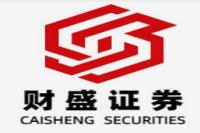Southbound Funds Flow: A Deep Dive into Hong Kong's Stock Market Dynamics
Meta Description: Uncover the intricacies of southbound funds flow into the Hong Kong stock market. Explore the driving forces, key trends, and potential impact on market performance.
Introduction:
The world of finance is a constant whirlwind of activity, with global capital flows shaping market trends and investor sentiment. One particularly fascinating phenomenon is the southbound flow of funds into the Hong Kong stock market. These funds, originating from mainland China, have become a significant force, injecting fresh capital and influencing market dynamics. Understanding the intricacies of southbound funds flow is crucial for investors seeking to navigate the Hong Kong market effectively. This article delves deep into this complex topic, examining the driving forces, key trends, and potential impact on market performance.
The Power of Southbound Funds: A Game-Changer for Hong Kong's Stock Market
The southbound funds flow, facilitated by the Stock Connect program, has fundamentally altered the landscape of the Hong Kong stock market. This program, launched in 2014, allows mainland investors to directly invest in Hong Kong-listed stocks, opening a new avenue for capital inflow.
Understanding the Driving Forces:
1. Expanding Investment Horizons:
Mainland investors, eager to diversify their portfolios and gain exposure to global markets, see Hong Kong as a gateway. The Hong Kong stock market offers access to a diverse range of companies, including those with global operations and strong growth potential.
2. Favorable Market Conditions:
The Hong Kong stock market has historically attracted investors due to its robust legal and regulatory framework, transparent trading environment, and accessibility to international capital. The market's strong track record and stable political climate further enhance its appeal.
3. Government Incentives:
The Chinese government has actively promoted southbound investment, recognizing its potential to boost Hong Kong's economy and enhance market liquidity. Initiatives like the Stock Connect program have been instrumental in facilitating this flow of capital.
Key Trends in Southbound Funds Flow:
1. Growing Volume:
The southbound funds flow has consistently grown in volume over the years. This trend reflects the increasing interest from mainland investors and the expansion of investment opportunities available in Hong Kong.
2. Sectoral Focus:
Southbound funds tend to favor specific sectors, including technology, financials, and consumer staples. This reflects the evolving preferences of mainland investors and the growth potential of these sectors in Hong Kong.
3. Strategic Allocation:
Mainland investors often employ a long-term investment strategy, seeking to capitalize on the growth potential of Hong Kong-listed companies. This approach, characterized by patient capital allocation, has contributed to market stability.
Impact on Market Performance:
1. Increased Liquidity:
The influx of southbound funds has injected significant liquidity into the Hong Kong stock market, contributing to increased trading volume and wider market participation.
2. Valuation Effects:
Southbound funds have often been associated with higher valuations for certain stocks, particularly those favored by mainland investors. This dynamic can influence market sentiment and investment decisions.
3. Market Volatility:
While southbound funds can contribute to market stability, their sudden shifts in allocation can sometimes lead to heightened volatility, particularly during periods of uncertainty.
Challenges and Opportunities:
1. Regulatory Considerations:
The increasing role of southbound funds necessitates careful regulatory oversight to maintain market integrity and address potential risks associated with capital flows.
2. Investor Education:
Educating mainland investors about the intricacies of the Hong Kong stock market is crucial to ensure informed investment decisions and minimize potential risks.
3. Infrastructure Development:
Continued development of infrastructure, including trading platforms and settlement systems, is essential to facilitate the smooth flow of southbound funds and enhance market efficiency.
Conclusion:
Southbound funds flow has emerged as a significant force in the Hong Kong stock market, transforming its dynamics and influencing market performance. Understanding the driving forces, key trends, and potential impact of these funds is crucial for investors seeking to navigate this dynamic market effectively. As this phenomenon continues to evolve, it will be essential to monitor its impact on the overall market landscape and adapt investment strategies accordingly.
FAQs:
Q1. What is the Stock Connect program?
A1. The Stock Connect program refers to a series of initiatives launched by the Chinese government that facilitate cross-border investment between Hong Kong and mainland China. This program allows mainland investors to invest in Hong Kong-listed stocks and vice versa.
Q2. Why are southbound funds important for the Hong Kong stock market?
A2. Southbound funds are a vital source of capital, enhancing market liquidity, increasing trading volume, and driving market growth. They also contribute to the diversification of investment portfolios and the overall development of the Hong Kong stock market.
Q3. What are the potential risks associated with southbound funds flow?
A3. While southbound funds can be beneficial, they also pose some risks. Sudden shifts in allocation can lead to market volatility, and potential regulatory challenges need to be addressed.
Q4. How can investors benefit from understanding southbound funds flow?
A4. Understanding the dynamics of southbound funds flow can provide investors with insights into market trends, valuation changes, and potential investment opportunities. This knowledge can help investors make informed decisions and adapt their strategies accordingly.
Q5. What are the future prospects for southbound funds flow?
A5. The southbound funds flow is expected to continue growing as mainland investors seek greater diversification and access to global markets. Continued government support and infrastructure development will likely further enhance this flow of capital.
Q6. What are some key takeaway points for investors?
A6. Investors should be aware of the significance of southbound funds flow, its impact on market dynamics, and potential risks. Staying informed about key trends and regulatory developments can help investors navigate the Hong Kong stock market effectively and capitalize on investment opportunities.
The Importance of Southbound Funds Flow
Southbound funds flow has become a crucial component of the Hong Kong stock market, impacting valuation, liquidity, and overall market dynamics. As a key factor for investors to consider, understanding the complexities of southbound funds flow is essential for informed investment decisions.



